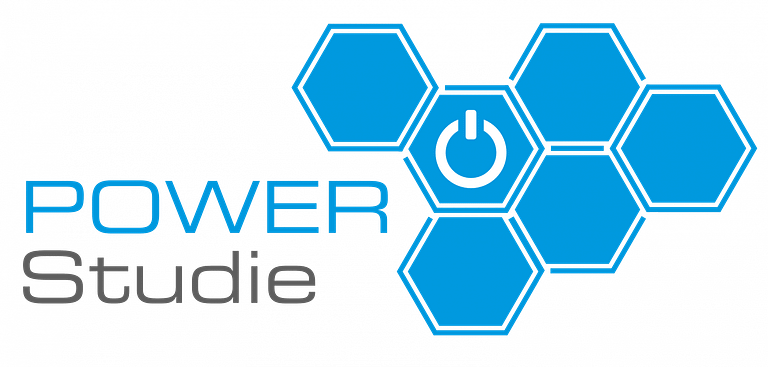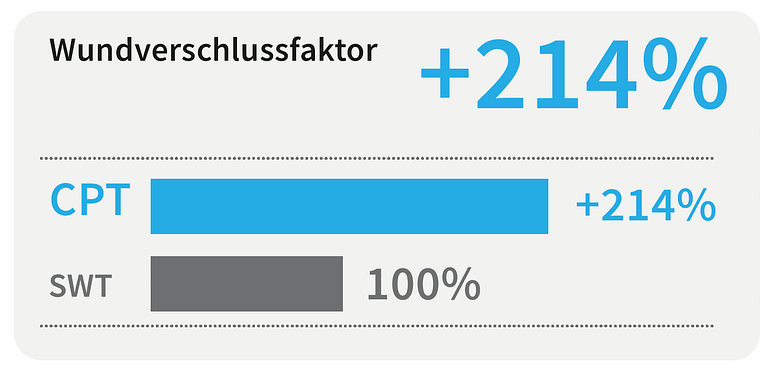Interim results of the POWER study
POWER study (Plasma on chronic Wounds for Epidermal Regeneration) proves the clear superiority of CPT® cold plasma therapy in the treatment of chronic wounds compared to standard wound treatment!

The study is supported by the Federal Ministry of Education and Research under the acronym: cptPOWER.
Chronic wounds represent a significant medical and financial challenge for millions of patients as well as for healthcare systems. Wound care with standard wound therapy (SWT) is currently considered the gold standard. Recent evidence suggests that cold plasma therapy (CPT) offers promise for improving chronic wounds. With this in mind, the POWER study, funded by the German Federal Ministry of Education and Research, was conducted to investigate the efficacy of large-area plasma therapy for the treatment of chronic, non-healing wounds compared to standard wound therapy (period of four weeks). An applicator was used that generates a homogeneous plasma field over a large treatment area (for wound sizes of up to 10 x 10 cm) and achieves optimal treatment in just two minutes. The treatment is fully automatic and optimized for effect and can be carried out by non-medical personnel regardless of wound size and depth.

The question examined was:
Is there a significant difference in terms of reduction in area of chronic wounds between standard wound therapy according to guidelines versus the combination with a 2-minute cold plasma treatment with the CPT®patch?
The design of the study emphasizes the highest possible generalizability of the clinical data. The generation of an artificial study population by selection on certain (advantageous) patient groups was avoided. The study was planned and conducted by independent bodies, including the involvement of a clinical trial coordination center (KKS). The review process involved the participation of various experts (physicians, statisticians, economists) and the German Society for Wound Healing and Wound Treatment.
According to the current international state of research, the main active components of cold atmospheric pressure plasmas are reactive nitrogen and oxygen species (RNS, ROS), UV radiation and electric fields.
According to the current international state of research, the main active components of cold atmospheric pressure plasmas are reactive nitrogen and oxygen species (RNS, ROS), UV radiation and electric fields.
- Accelerated wound healing rate:
Compared to the SWT group, the wound closure factor significantly increases to 214% in the CPT group. This indicates that wounds heal significantly faster under CPT treatment.

2. reduced need for antibiotics:
The CPT group required only 4% antibiotics compared to 23% in the SWT group.

3. pain relief:
Patients in the CPT group reported less wound pain and a reduction in passive pain to 0 (median)was recorded.
4. increasing the quality of life:
Patients in the CPT group showed a strong and clinically significant improvement in quality of life.


The results of the interim analysis show that the combination of CPT and SWT is significantly superior to mono-treatment SWT in terms of efficacy alone.
One of the significant results is the significant increase of the wound closure factor to 214% when using CPT cold plasma therapy.
The acceleration of wound closure was already noticeable with the first treatment with CPT on day 2 and continued continuously until day 25.
According to the current international state of research, the main active components of cold atmospheric pressure plasmas are reactive nitrogen and oxygen species (RNS, ROS), UV radiation and electric fields.
Journal of Clinical Medicine
(ISSN 2077-0383) is an international, peer-reviewed, open access journal of clinical and preclinical research.
Publication August 2023
Prof. Dr. med. Markus Stücker
Clinic for Dermatology, Venereology/Allergology, Ruhr University Bochum, President of the German Society for Phlebology and Lymphology
Dr. Nessr Abu Rached
Clinic for Dermatology, Venereology/Allergology, Ruhr University Bochum
Prof. Dr. med. Martin Storck
Karlsruhe Municipal Hospital, President of the German Wound Council
Dr. Thomas Meyer
Clinic for Dermatology, Venereology/Allergology, Ruhr University Bochum, German Society for Hygiene and Microbiology - Chairman Diagnostic Procedures
Dr. Susanne Kley
Scientific Institute for Health Economics and Health Systems Research, Leipzig